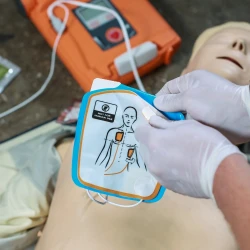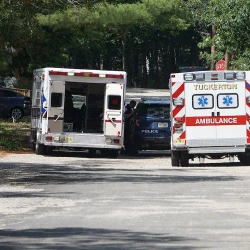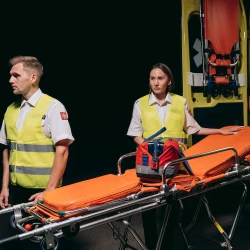Opioid overdose is a medical emergency that can lead to severe health complications or death if not promptly addressed. Understanding how to recognize the signs of an overdose and knowing what immediate actions to take can save lives. This guide offers a comprehensive overview of opioid overdose symptoms and the critical steps for responding, including the administration of naloxone.
Signs of an Opioid Overdose
Recognizing the signs of an opioid overdose is the first step in delivering effective emergency care. If you observe any of the following symptoms, seek medical help immediately:
- Unresponsiveness: The individual is not waking up or responding to external stimuli.
- Body is Limp: Muscles lose their tone, leading to an unresponsive or floppy body.
- Breathing Difficulties: Slow, shallow, or even stopped breathing.
- Blue/Dark Purple Skin: Usually around the lips and fingernails.
- Pinpoint Pupils: Pupils become exceedingly small.
- Gurgling Noises: Snore-like sounds that can indicate respiratory distress.
Immediate Actions
Step 1: Call 911
Immediately call 911 or instruct someone else to do so. While waiting for emergency responders, try to keep the individual awake and breathing.
Step 2: Administer Naloxone
If you have access to naloxone (Narcan), administer it as quickly as possible. Naloxone temporarily reverses the effects of opioid overdose. It can be administered through an intramuscular injection or a nasal spray.
Nasal Spray:
- Assemble the naloxone nasal spray according to its instructions.
- Tilt the person's head back and provide one spray into one nostril.
Injection:
- Draw up the naloxone into a syringe.
- Inject it into a muscle, usually the upper arm or thigh.
Step 3: Perform Rescue Breathing
If the person is still not breathing or breathing is shallow:
- Tilt their head back.
- Pinch their nose shut.
- Give one breath every 6 seconds.
Additional Steps
- Stay with the individual until emergency services arrive.
- Place them in the recovery position (on their side to prevent choking) if you cannot keep them awake.
- Be prepared to administer a second dose of naloxone if symptoms do not improve within 2-3 minutes.
Conclusion
Recognizing the signs of an opioid overdose and knowing how to respond can mean the difference between life and death. The administration of naloxone plays a crucial role in overdose reversal and should be part of your emergency response toolkit if you or someone you know is at risk. The more we educate ourselves and others about this, the more lives we can save.
By understanding these essential steps, you equip yourself with the knowledge and readiness to intervene effectively during an opioid overdose emergency.




